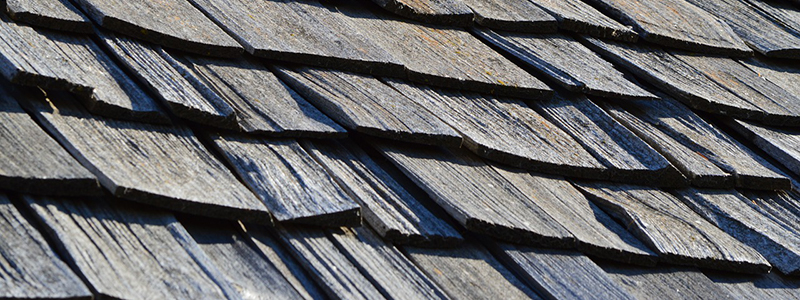High winds can cause damage to your roof, even without hail or other harmful weather. Strong winds can move in many directions in a storm, catching corners and perimeters of your roof. Anywhere the roofing material is even a little loose, the wind gets below and pries it up. The next time a storm strikes, the lifted materials have surface area for the wind to catch onto. It’s a self-reinforcing reaction once the wind starts damaging shingles, with each successive storm further damaging your home. Once shingles are damaged, you risk water damage, so you can’t afford to ignore these signs of wind damage to a roof.
There are several types of damage high winds can cause to your roof, including leaks, missing shingles, and gutter problems.

Signs of Wind Damage to a Roof
Wind-damaged roof appearance varies by the type, but mainly focuses on a few main areas:
Shingle Damage
Missing shingles are one of the easiest to determine signs of storm damage to the roof. But even if they aren’t missing, be on the lookout for any noticeable damage. If they look too smooth, that is an indication that they have suffered some loss of granulation. Also, watch for any curling or bowing indicating something is structurally wrong with the shingle. Obviously, cracks or breaks are big red flags.
A good general rule is that if your shingles don’t look smooth and uniform, there is a high likelihood they are damaged and could lead to worse problems if not repaired immediately.
Wood Shingles/Shakes
Wood shingles and shakes are made, not surprisingly, from wood. While wood makes a great building material, it can be vulnerable to mold and decay. While there are different roof coatings that can help prevent this, be on the lookout for anything in the wood that looks warped, discolored, split, or otherwise unusual.
Flat Roof
Flat roofing may seem like it’s less likely to be damaged by wind, but it can still see significant damage. Identifying it is slightly different since it doesn’t typically use shingles. Instead, keep an eye out for any blistering or wrinkling that you see. This is typically a sign of wind uplift, which is when the air manages to get under the material and cause wind damage to a flat roof.
Also, look out for any cracks or tears that could cause leaks and other problems.
Damaged Flashing
Flashing is the metal material that is generally placed where the shingles meet a flat surface, such as at the start of the chimney. The primary point of this is to prevent water from getting under the shingles. But it is typically made out of flat, thin metal, so it can be particularly vulnerable to wind.
Tears or buckling in the flashing is one of the signs of wind damage to a roof that you shouldn’t ignore.
Crumbling Roofing Cement
Roofing cement is a solution that is often used to repair damaged sections of a roof. Pay particularly close attention to this if it’s on your roof, because if it seems to be crumbling, that is a big example of wind damage and it needs to be repaired or replaced.
Perform an Outdoor Inspection
Check for missing and damaged shingles on your roof and around your home. While you are checking your roof, inspect the:
- Chimney
- Ventilation pipes
- Roof flashing
- Gutters
- Fencing
Please note that these are elements that can suffer great damage after strong winds and damaging storms.
Perform an Indoor Inspection
Moisture marks, brown, yellow, or grey stains, and peeling paint on walls and/or ceilings all indicate a damaged, leaking roof as well as damp rafters or leaks in your attic. If there is a sudden increase in energy costs, this could be a sign your roofing ventilation has been compromised.
Have Wind Damage Professionally Repaired
If you suspect wind damage or are concerned, have a professional roofing contractor conduct a more thorough inspection. They’ll be able to confirm whether damage is present and explain how to best repair it. Delaying an inspection will likely only lead to more extensive damage, so have a professional come out as soon as possible.
If your roof needs to be inspected for damage, contact us at Aces Roofing to schedule a wind damage inspection.
